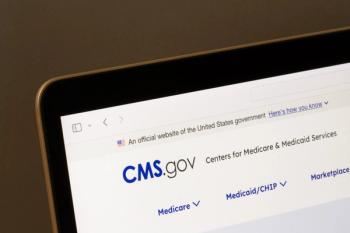
- Drug Topics April 2023
- Volume 167
- Issue 04
The Cost of Keeping Proper Inventory
Keeping inventory always comes with various costs. How do pharmacies approach these obstacles?
Technology has been a game changer when it comes to managing pharmacy inventory and associated costs. Technology continues to evolve, helping pharmacists better manage their inventories, customize their supply chain management, and provide important data analytics—ultimately providing better customer service to their clients.
One approach that pharmacists can take is using inventory management software that tracks inventory levels, expiration dates, and orders. Technology can also track usage patterns, enabling pharmacists to forecast demand and plan accordingly.
Wendy Sellers, RPh, a senior account executive at OrderInsite, a provider of technology and insights for pharmacists to manage and monitor prescription drug inventory, noted that pharmacists no longer need to run dispensing reports to manually set minimum reorder points. Instead, artificial intelligence can consume and evaluate large amounts of data to provide the best analysis or recommendation for setting reorder points.
The goal, she explained, is to achieve timely in stock without overstock to keep an accurate perpetual inventory and ensure day’s supply is calculated accurately for each prescription.
“Pharmacies no longer need to stock an item every day because there are now digital management platforms that systematically order items timely for refill-based prescriptions,” Sellers said. “For example, a pharmacy has one patient on an expensive maintenance medication. To ensure the product is in stock when the patient needs a refill, the pharmacy orders the product immediately after dispensing and keeps it in stock 365 days a year. With a forecasting tool, like OrderInsite OI Replenish, the system can order the drug five days before the predicted refill date, thereby stocking the item 60 days a year.”
Danny Dang, PharmD, a board member at the Pharmacists Society of the State of New York and owner and pharmacist at Esco Pharmacy in New York City, recommends setting up minimum and maximum inventory products to trigger automatic orders, which saves time and improves accuracy and efficiency.
“In the past, [it took] 4 managers spending 2 hours manually to do inventory,” Dang said. “Now, it only takes three minutes to find out what we need and approve the order.”
Technology can also be used to automatically sort and find the lowest cost of products. Dang estimates that Esco Pharmacy saves between $2000 and $3000 per day in ordering costs using this method.
Utilizing RFID
Sandy Still, PharmD, director of clinical strategy at Bluesight, a provider of medication intelligence software, noted pharmacists should incorporate radio-frequency identification (RFID) technology to optimize inventory management.
An RFID system involves the placement of RFID tags on items that emit signals to the reader which are then processed by an application, generating real-time results for stock taking, inventory levels, transactions or individual customer purchase order history.
“By optimizing workflows with RFID inventory management solutions, the refill process becomes technician-driven and more efficient for all staff involved, and frees up the pharmacist for clinical duties,” she said. “I highly suggest leveraging RFID inventory management data reports, including expiration analytics and item consumption data, to drive par level changes which translate to hard dollars saved.”
Additionally, using an RFID price tag helps to promote real-time price adjustment to help consumers with item description and price reflection at point of sale, which saves the pharmacy time to print and update stickers.
“We implement lot and expiration scanning to moving the products quickly and avoid wasting any inventory,” Dang said. “We update the software to flag virtual drug inventory for different programs like 340B program drugs, long-term care drugs, and retail drugs to keep track of each program’s inventory records. This limits waste and manual tracking and saves the pharmacy around $1 million annually.”
Another inventory management tip is to use data analytics tools to identify areas for improvement and make data-driven decisions. Previously, pharmacists spent hours searching the shelves looking for obsolete, stale inventory to return to their vendor for credit. Many platforms today deliver alerts to stores when items should be returned to suppliers eliminating the need to do this manually.
“It’s important to keep track of inventory to reduce waste, especially out-of-date prescriptions, reduce diversion or potential losses from theft or mishandling, and pharmacists will spend less time performing inventory-related tasks which increases the time pharmacy employees can spend serving customers,” Sellers said.
More than Money
Dang noted it’s important to stay current with bulk orders, make sure inventories are within 30 days of purchase or sending CVS Caremark notification of bulk purchase, or there’s a risk of losing money when audited or worse, losing the contract.
And while controlling inventory is important so pharmacists aren’t sitting on money, there are other factors to consider when managing inventory.
“It’s important to keep track of inventory to reduce waste, especially out-of-date prescriptions, reduce diversion or potential losses from theft or mishandling, and pharmacists will spend less time performing inventory-related tasks which increases the time pharmacy employees can spend serving customers,” Sellers said.
Articles in this issue
over 2 years ago
Case Study: Treating Infants for Cannabis Exposureover 2 years ago
Oral Treatment Approved for Anemia Caused by CKDover 2 years ago
A Return to Normalcyover 2 years ago
Oncology Pharmacists Are Crucial in Skin Cancer Managementover 2 years ago
A Biosimilar Wave Looms Large Over US Biologics Marketover 2 years ago
The JAK Inhibitor Pipeline Builds in Dermatologyover 2 years ago
Kudos to WHOover 2 years ago
How Pharmacists Should Talk So Vaccine-Hesitant Parents ListenNewsletter
Pharmacy practice is always changing. Stay ahead of the curve with the Drug Topics newsletter and get the latest drug information, industry trends, and patient care tips.





















































































































































